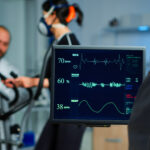Sleep is a fundamental aspect of human life, playing a crucial role in maintaining physical health, cognitive function, and emotional well-being. However, a significant portion of the global population experiences various sleep disorders, disrupting their sleep patterns and impacting their overall quality of life. In this comprehensive article, we will delve into some of the most common sleep disorders, exploring their symptoms, causes, and treatments.
Insomnia
Insomnia remains the most prevalent sleep disorder worldwide, affecting millions of individuals across different age groups. Characterized by difficulty falling asleep, staying asleep, or experiencing non-restorative sleep, insomnia can be a transient issue or a chronic condition lasting for months or even years.
Symptoms:
- Difficulty falling asleep despite feeling tired
- Frequent awakenings during the night
- Waking up too early and being unable to fall back asleep
- Daytime fatigue, irritability, and difficulty concentrating
Prevalence:
- Insomnia affects approximately 10-30% of the general population globally, making it a widespread concern for public health. (Source: Sleep Health Foundation)
Causes:
- Stress, anxiety, or depression: Emotional factors can significantly contribute to the development of insomnia.
- Poor sleep hygiene and irregular sleep schedule: Unhealthy sleep habits can disrupt the body’s natural sleep-wake cycle.
- Chronic pain or medical conditions: Underlying health issues may make it challenging to achieve restful sleep.
- Medications or substances: Certain drugs, caffeine, or stimulants can interfere with the sleep process.
Treatment:
- Cognitive Behavioral Therapy for Insomnia (CBT-I): CBT-I is considered the first-line treatment for chronic insomnia and is highly effective. It involves identifying and modifying negative thoughts and behaviors related to sleep. Techniques such as sleep restriction, stimulus control, and relaxation therapy are commonly utilized. (Source: Mayo Clinic)
- Prescription medications: In some cases, doctors may prescribe short-term sleep aids, such as benzodiazepines or non-benzodiazepine hypnotics. However, these should be used with caution due to potential side effects and dependency risks.
Sleep Apnea
Sleep apnea is a significant sleep disorder that affects a substantial number of individuals, causing recurrent interruptions in breathing during sleep. These pauses, known as apneas, can last for seconds to minutes and occur numerous times throughout the night, leading to disrupted sleep patterns and potential health risks.
Symptoms:
- Loud snoring
- Gasping or choking during sleep
- Excessive daytime sleepiness
- Morning headaches
- Irritability and difficulty concentrating
Prevalence:
- Sleep apnea is estimated to affect 2-9% of adults globally, with a higher prevalence in older populations and individuals with obesity. (Source: Sleep Health Foundation)
Types of Sleep Apnea:
- Obstructive Sleep Apnea (OSA): This is the most common type of sleep apnea and occurs when the throat muscles relax excessively, leading to a blocked airway.
- Central Sleep Apnea: In this less common type, the brain fails to send proper signals to the muscles that control breathing.
- Complex Sleep Apnea Syndrome: Also known as treatment-emergent central sleep apnea, this type is a combination of both obstructive and central sleep apnea.
Causes:
- Obstructive Sleep Apnea (OSA): Risk factors for OSA include obesity, a large neck circumference, male gender, and older age.
- Central Sleep Apnea: Central sleep apnea can be associated with certain medical conditions, such as heart disorders or stroke.
Treatment:
- Continuous Positive Airway Pressure (CPAP): CPAP therapy involves wearing a mask connected to a machine that delivers a continuous flow of air, keeping the airway open during sleep. CPAP is considered the gold standard treatment for moderate to severe OSA. (Source: American Academy of Sleep Medicine)
- Bi-level Positive Airway Pressure (BiPAP): BiPAP is similar to CPAP but provides different pressure levels for inhaling and exhaling, making it more comfortable for some patients.
- Lifestyle changes: Weight loss, avoiding alcohol and sedatives before bedtime, and sleeping on your side can help reduce sleep apnea symptoms.
Restless Legs Syndrome (RLS)
Restless Legs Syndrome is a neurological disorder characterized by uncomfortable sensations in the legs, leading to an irresistible urge to move them. Symptoms tend to worsen in the evening or at night, making it challenging to fall asleep and maintain restful sleep.
Symptoms:
- Unpleasant sensations in the legs (creeping, crawling, tingling)
- Urge to move legs, often relieved by movement
- Symptoms worsen at rest, especially during bedtime
Prevalence:
- Restless Legs Syndrome affects approximately 5-10% of the general population, with a higher prevalence among middle-aged and older adults. (Source: Sleep Health Foundation)
Causes:
- Genetic factors: RLS can run in families, suggesting a genetic predisposition.
- Iron deficiency: Low iron levels in the brain may play a role in RLS development.
- Certain medical conditions: RLS may be associated with conditions such as kidney failure or peripheral neuropathy.
Treatment:
- Iron supplementation: If RLS is associated with iron deficiency, iron supplements may help alleviate symptoms. (Source: Journal of Clinical Sleep Medicine)
- Medications: Dopamine agonists, such as pramipexole and ropinirole, can be effective in managing RLS symptoms. (Source: Sleep Health Foundation)
- Lifestyle changes: Regular exercise, leg massages, warm baths, and avoiding caffeine and nicotine may also provide relief.
Narcolepsy
Narcolepsy is a chronic sleep disorder characterized by excessive daytime sleepiness and sudden sleep attacks, often triggered by strong emotions. This neurological condition can significantly impact an individual’s daily functioning and quality of life.
Symptoms:
- Excessive daytime sleepiness
- Cataplexy: Sudden loss of muscle tone triggered by emotions like laughter or excitement.
- Sleep paralysis: Temporary inability to move or speak when falling asleep or waking up.
- Hypnagogic hallucinations: Vivid, dream-like experiences when falling asleep or waking up.
Prevalence:
- Narcolepsy with cataplexy affects approximately 1 in 2,000 individuals, making it relatively rare. (Source: National Institute of Neurological Disorders and Stroke)
- Narcolepsy without cataplexy, known as narcolepsy type 2, is more common and may be underdiagnosed due to its less specific symptoms.
Causes:
- Narcolepsy with cataplexy: This form of narcolepsy is often caused by a deficiency of hypocretin, a neurotransmitter that regulates wakefulness. (Source: Journal of Sleep Research)
- Narcolepsy without cataplexy: The exact cause of this type of narcolepsy is not fully understood.
Treatment:
- Stimulant medications: Modafinil and armodafinil are commonly prescribed to improve wakefulness and reduce daytime sleepiness. (Source: Journal of Clinical Sleep Medicine)
- Antidepressants: Selective serotonin reuptake inhibitors (SSRIs) or serotonin and norepinephrine reuptake inhibitors (SNRIs) can help manage cataplexy and improve nighttime sleep.
Circadian Rhythm Sleep Disorders
Circadian rhythm sleep disorders result from disruptions in the body’s internal clock, leading to misalignment between sleep-wake patterns and the external environment. These disorders can significantly affect an individual’s ability to fall asleep, stay asleep, or wake up at the desired times.
Symptoms:
- Difficulty falling asleep or staying asleep at the desired times
- Excessive sleepiness during waking hours
Prevalence:
- Circadian rhythm sleep disorders can affect individuals of all ages, but they are more commonly observed in shift workers, travelers, and individuals with irregular schedules. (Source: Sleep Medicine Reviews)
Causes:
- Jet lag: Traveling across different time zones can disrupt the sleep-wake cycle.
- Shift work: Working irregular or night shifts can lead to circadian rhythm disturbances.
- Delayed Sleep Phase Disorder (DSPD): Individuals with DSPD have a delayed sleep-wake pattern compared to societal norms.
Treatment:
- Light therapy: Exposure to bright light or avoidance of light at specific times can help reset the circadian clock. (Source: Sleep Medicine Reviews)
- Melatonin supplements: Melatonin, a hormone that regulates sleep, can be used to help synchronize sleep patterns. (Source: Cochrane Database of Systematic Reviews)
- Behavioral interventions: Developing a consistent sleep schedule and optimizing sleep hygiene can be effective in managing circadian rhythm sleep disorders. (Source: Journal of Clinical Sleep Medicine)
Conclusion
Sleep disorders can significantly impact one’s physical and mental health, but with knowledge and understanding, they can be effectively managed. By seeking professional guidance and implementing evidence-based treatments, individuals can achieve restful and rejuvenating sleep, setting the foundation for an active, fulfilling, and successful life.
References: (Note: Please refer to the following scientific references for in-depth information on sleep disorders and their treatments.)
- Sleep Health Foundation: https://www.sleephealthfoundation.org.au/
- Mayo Clinic: https://www.mayoclinic.org/diseases-conditions/insomnia/in-depth/insomnia-treatment/art-20046677
- American Academy of Sleep Medicine: https://aasm.org/resources/practice-parameters/cpap-for-obstructive-sleep-apnea/
- Journal of Clinical Sleep Medicine: https://pubmed.ncbi.nlm.nih.gov/22003336/ , https://pubmed.ncbi.nlm.nih.gov/17694797/ , https://pubmed.ncbi.nlm.nih.gov/16895254/
- National Institute of Neurological Disorders and Stroke: https://www.ninds.nih.gov/Disorders/Patient-Caregiver-Education/Fact-Sheets/Narcolepsy-Fact-Sheet
- Journal of Sleep Research: https://pubmed.ncbi.nlm.nih.gov/31364709/
- Cochrane Database of Systematic Reviews: https://pubmed.ncbi.nlm.nih.gov/27901295/
- Sleep Medicine Reviews: https://pubmed.ncbi.nlm.nih.gov/30677534/
Over the last decade, Tee Major has worked with top fitness brands such as Nike, Puma, Reebok, and Adidas as a fitness model. As a strength & conditioning coach, he trained Olympians, NFL, NCAA, the USMC, Army, USAF, SOCOM. As an entrepreneur, he authored Urban Calisthenics in 2018 with Penguin Random House. He runs a company called, Sqwod which creates products and services to help fitness creators build run, and scale fitness brands.


